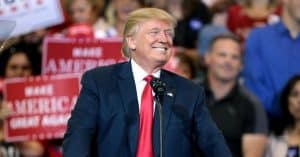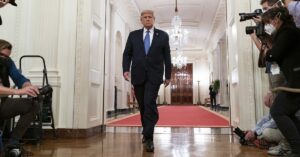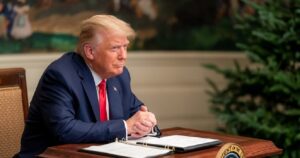Trump's firings of watchdogs legally challenged
Eric Soskin, who was one of the inspectors general removed by former President Donald Trump, supports Trump's action and asserts that it aligns with executive authority.
Eighteen months after former President Donald Trump began his second term, a legal controversy unfolded over his decision to remove 17 inspectors general, including Eric Soskin, just four days into his administration.
The removals have incited a lawsuit from eight of the affected watchdogs, aiming to have their dismissals declared unlawful and their positions reinstated. Despite being one of the ousted officials, Soskin has filed a brief supporting Trump's authority in this matter.
Legal Arguments Supporting Trump's Decision
Soskin, previously part of the U.S. Department of Transportation, was originally appointed during Trump's first term. In the legal brief he submitted, Soskin argues that Trump's actions are supported by Article II of the U.S. Constitution, recent Supreme Court decisions, and updates to federal policies.
This legal stance directly opposes the lawsuit filed by the eight inspectors general who are challenging their dismissals. According to Soskin and his attorney, Jeff Beelaert, the president possesses the authority to make significant staff decisions, especially at the onset of an administration.
Judicial Resistance and Congressional Reactions
While the plaintiffs seek judicial intervention to overturn the firings, U.S. District Judge Ana Reyes has shown hesitance in granting emergency relief. As the case proceeds, the fired inspectors general face an uphill battle, with Judge Reyes overseeing their demands.
The legal suit has also captured the attention of some lawmakers. Senate Judiciary Committee Chairman Chuck Grassley previously emphasized the need for Congress to better understand the circumstances and motivations behind such personnel changes. However, Grassley has recently refrained from further commentary on the matter.
Implications of the Inspector General Act Amendment
Critics of Trump's move note a procedural shortfall: the absence of the required 30-day notification to Congress before firing inspectors general. This provision stems from a 2022 amendment to the Inspector General Act. Nevertheless, the White House Director of Presidential Personnel justified the firings, attributing them to shifting administration priorities.
Soskin's legal brief challenges the relevance of the 1930s-era Humphrey's Executor precedent invoked by the plaintiffs. It argues that this precedent primarily applied to specific commissions directly accountable to Congress and, thus, is not applicable to the current firings.
Trump's Authority and Inspector General Roles
During the legal proceedings, Soskin's attorney, Jeff Beelaert, emphasized how recent Supreme Court rulings reinforce presidential removal authority. He underscored the principle that following elections, the president should have the discretion to choose administrative personnel, highlighting this as a key element often overlooked in debates.
Beelaert also made it clear that the argument transcends political lines, asserting that any president, irrespective of party affiliation, should have the capacity to select personnel who align with the administration's objectives.
The Path Forward for Ousted Watchdogs
The legal confrontation is set to continue with a preliminary hearing scheduled for March 11. Judge Reyes' early responses indicate a challenging path for the plaintiffs.
With Soskin distancing himself from his former inspector general peers, the case could hold significant precedential value concerning presidential powers and the constraints on personnel decisions.
While the outcome remains uncertain, the broader implications for executive power and checks and balances will be closely scrutinized by legal experts, policymakers, and the public alike.




